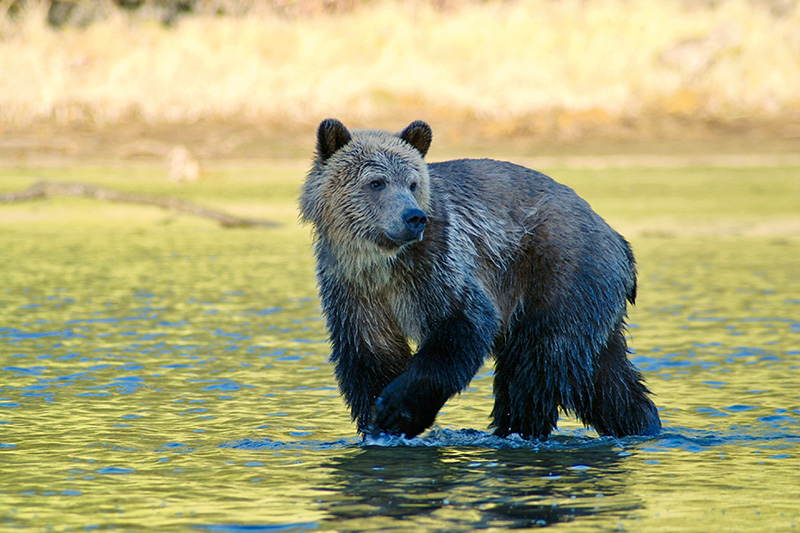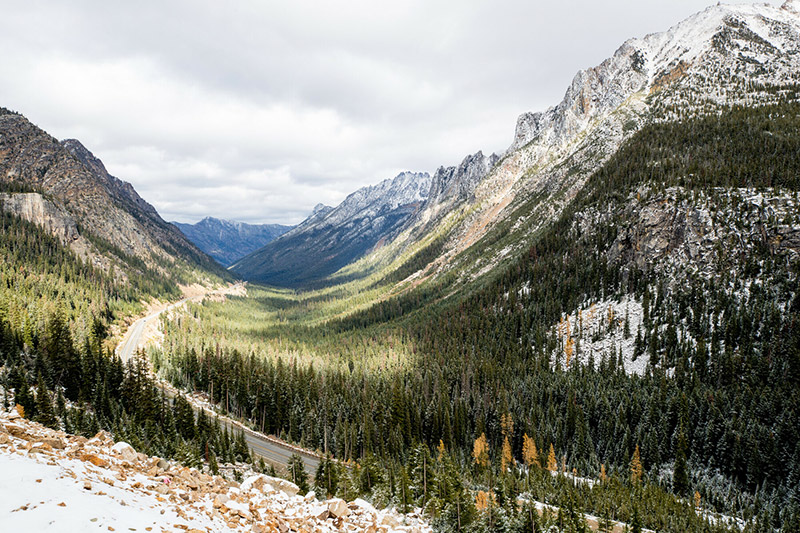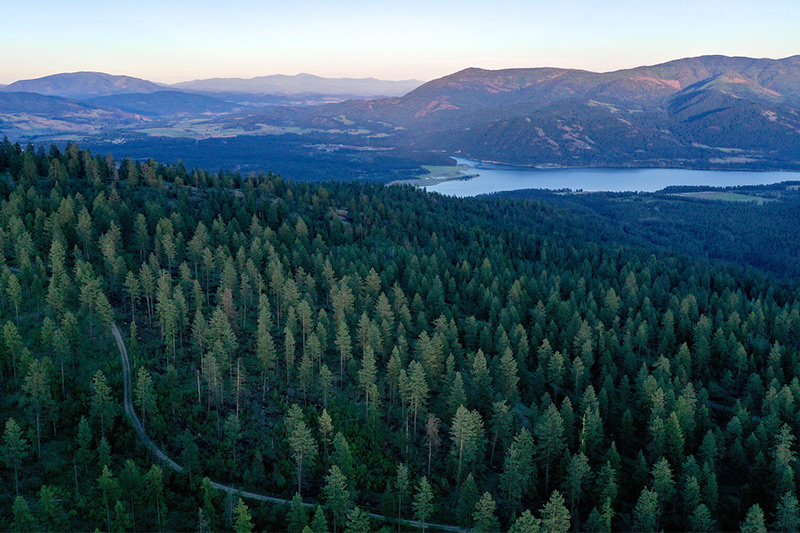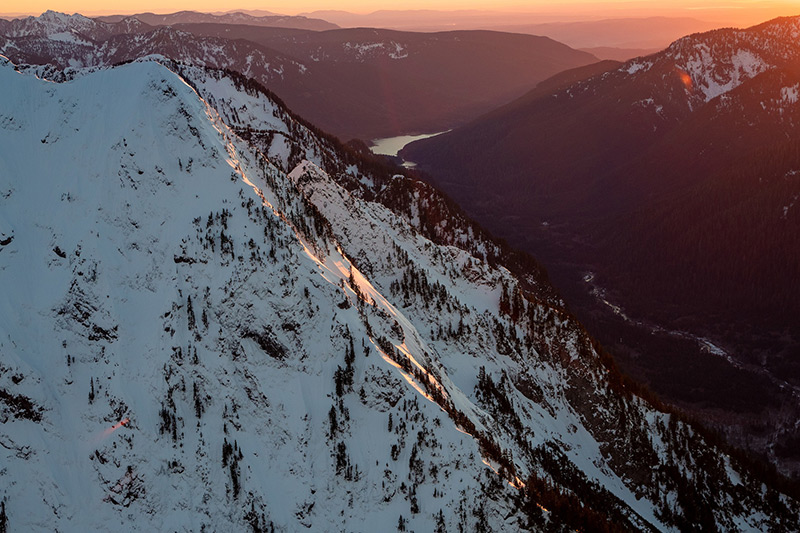Grizzly Bear Restoration
Bringing Grizzly Bears Back to the North Cascades
GRIZZLY BEARS BELONG HERE
In April, 2024, the National Park Service and the U.S. Fish and Wildlife Service announced that they will reintroduce grizzly bears to the North Cascades of Washington! This momentous decision means that grizzlies will soon resume their vital role as ecological engineers and cultural icons, making the wild North Cascades Ecosystem even wilder.
In places where grizzly bears thrive, so do the other wildlife, plants, and people with whom they share the land. Our Living Northwest program joins Washingtonians in celebrating the return of grizzly bears to the North Cascades. Woodland Park Zoo endorses a scientific, community-engaged process for restoring grizzlies to this ecosystem. Together, we can make grizzly bear recovery happen on the ground—for the grizzlies, and for ourselves.
Because it takes a village to raise a population of bears, the zoo is a member of Friends of the North Cascades Grizzly Bear. This broad coalition was formed in 2015, and represents millions of members and grizzly bear supporters. For years, Woodland Park Zoo has advocated the efficient and effective restoration of grizzlies, and a careful planning process that will allow people and grizzlies to safely coexist in perpetuity.
Visitors to Woodland Park Zoo love to watch our orphaned brown bear cubs, Fern and Juniper, evoke the spirit of wilderness by serving as charismatic ambassadors for their wild relatives—who thrived in the North Cascades until a century ago.
Meet Juniper and Fern
Thanks to your support, grizzly bears can return home to the North Cascades
Decades ago, the U.S. Fish and Wildlife Service designated the North Cascades region as 1 of 6 ecosystems in the lower 48 states where grizzly bears should be restored—and the only place outside of the Rocky Mountains. Conservation scientists have determined that we need to carefully reintroduce grizzlies in order for the population to recover. Now is the time!
In March 2024, the U.S. Fish and Wildlife Service and the National Park Service released a final Environmental Impact Statement (EIS) that evaluates options to restore grizzly bears to the North Cascades Ecosystem. The agencies identified a preferred alternative (Alternative C), under which 3 to 7 grizzlies will be translocated from healthy source populations each year until an initial population of 25 is established. The agencies also recommended a 10(j) rule under the Endangered Species Act that will give wildlife managers additional flexibility to responsibly manage bears.
Public feedback was key to the development of the final EIS. During the 45-day public comment period for the draft EIS, released in the fall of 2023, the agencies received over 12,000 public comments. Hundreds of individuals also provided input at public meetings across the region.
We are grateful to the U.S. Fish and Wildlife Service and the National Park Service for carefully examining the science and listening to the will of the public to develop a long-term plan so that people and grizzlies can coexist here in perpetuity.
See the National Park’s Service’s website to view the final EIS.
Coexisting with Grizzlies
It will take many years—perhaps a century or more—before a restored grizzly population in the North Cascades reaches its natural capacity. Models suggest this habitat can ultimately support at least 200 grizzlies. Grizzlies reproduce slowly and are generally shy of humans. But now is a good time be thinking about coexistence.
We know from locations like the Rockies and Alaska that people can safely hike and coexist with grizzly bears. Even in Yellowstone National Park, which is much smaller than the North Cascades Ecosystem, hosts millions of visitors each year, and is home to at least 150 grizzlies, bear encounters and especially attacks are exceedingly rare.

Photo by Robert Long
Grizzly bear experts recommend the following measures to minimize the chance of conflict:
- Properly store food, garbage, and other bear attractants.
- Hike in groups, leash your dog, and avoid hiking at dawn, dusk, or after dark.
- Don’t surprise a grizzly bear. Make noise and watch for fresh tracks and other bear signs.
- Enjoy grizzlies and other wildlife from a distance. Never approach, or run from, a grizzly.
- Carry bear spray and know how to use it in the rare case that physical contact is imminent.
The EIS process ensures that human-bear safety and bear awareness will be top priorities during the grizzly bear recovery process. Washingtonians already know how to coexist with black bears and other wildlife, and are proud to live in one of the wildest states in the country.
Let’s celebrate this rare opportunity to help make Washington the next Grizzly Bear State!
Grizzlies Dig Our Landscape
Grizzlies aren’t just symbols of wildness; these magnificent bears help keep the landscape healthy and wild. As omnivores, most of their diet consists of roots, berries and other plants, whose seeds are distributed through their droppings. Grizzly bears are also prolific diggers in their search for bulbs and burrowing small mammals, thereby aerating the soil and maintaining vibrant meadows.

Comprising more than 6 million acres of mostly public wildlands (with adjacent habitat in British Columbia), Washington’s North Cascades Ecosystem has witnessed the recent recovery of gray wolves, wolverines, and Pacific fishers. Grizzly bears remain the key missing piece needed to complete the rewilding puzzle.

North Cascades grizzlies coexisted with Indigenous peoples for thousands of years, playing an important role in cultural and hunting traditions. But with the expansion of European settlers in the 19th and early 20th centuries, grizzlies were trapped, hunted, and poisoned into regional extinction.

Before any of us were born, grizzlies had already been erased from our region’s rich natural heritage. Now we have the opportunity—and the moral imperative—to bring them back home.
Like many of us, grizzlies are opportunistic eaters—they make the most of what nature brings their way. In spring, they scavenge for winter-killed animals, and they won’t turn up their noses at newborn deer and elk. Termites, ants, and other insects also rank high on the grizzly’s menu.
Scientific models show that the North Cascades can provide more than enough food and space for a self-sustaining grizzly bear population. But existing grizzly populations in the Rocky Mountains and British Columbia are too far away, and the Cascades are too isolated by human development, to realistically enable bears to re-establish a population here on their own. That’s why we need a science-based blueprint to return grizzly bears to the North Cascades.
COMMON QUESTIONS
(Click to expand)
The Grizzly’s Long Trail Home
Grizzly bear restoration in the North Cascades is not a new idea. Scientists and conservationists have been working for decades to put grizzlies back on the map. In November 2022, the National Park Service (NPS) and the U.S. Fish and Wildlife Service (FWS) announced plans to renew the EIS process.
As part of the EIS, government experts are currently evaluating alternatives for achieving recovery goals. For example, one alternative presented in the previously drafted EIS, which was released in 2017 and later tabled, proposed an incremental approach in which a few grizzlies would be released each year until an initial population of 25 bears was established. Over time, additional bears would potentially be released as necessary to create a sustainable population.
If grizzly bears want to return to Washington’s North Cascades Ecosystem, can’t they come home on their own?
Although science has confirmed that grizzly bears inhabited our region for thousands of years, extensive surveys conducted over the past decades have not confirmed the presence of a single grizzly bear. Biologists have determined that grizzly populations in the Rocky Mountains and British Columbia are too far away, and that the Cascades are too isolated by human development, to realistically enable bears to re-establish a population here on their own. Grizzly bears need our help to return to the North Cascades.
Is there enough space and food for grizzlies in the North Cascades?
The U.S. Fish and Wildlife Service has identified Washington’s North Cascades Ecosystem as 1 of only 6 recovery zones in the Lower 48. This recovery zone comprises more than 6 million acres of mostly public wildlands—about the land area of the entire state of Vermont. The adjoining North Cascades population unit in British Columbia contains an additional 2 million-plus acres. Biologists estimate that bear habitat in the U.S. portion of the North Cascades Ecosystem can support at least 200 grizzly bears. There is plenty of habitat and wild food to support a healthy grizzly bear population in the vast North Cascades Ecosystem.
Will people be able to hike safely and live in the North Cascades if grizzlies are restored?
Millions of people safely hike and coexist with grizzly bears every year in the Rocky Mountains and Alaska. There is more than enough room in the North Cascades for humans and grizzlies to safely coexist, and people can recreate safely in grizzly bear country. Even in Yellowstone National Park, which is much smaller than the North Cascades Ecosystem, hosts millions of visitors each year, and is home to at least 150 grizzlies, bear encounters and especially attacks are exceedingly rare.
Grizzly bear experts recommend the following measures to minimize the chance of conflict:
- Properly store food, garbage, and other bear attractants.
- Hike in groups, leash your dog, and avoid hiking at dawn, dusk, or after dark.
- Don’t surprise a grizzly bear. Make noise and watch for fresh tracks and other bear sign.
- Enjoy grizzlies and other wildlife from a distance. Never approach, or run from, a grizzly.
- Carry bear spray and know how to use it in the rare case that physical contact is imminent.
Do Washingtonians want to see grizzly bears returned to the North Cascades?
In polling and public comments, Washingtonians have recognized grizzlies as a vital part of our natural heritage and have overwhelmingly supported this once-in-a-lifetime chance to restore them to the North Cascades. Humans were responsible for killing off grizzlies in the last century, and now we have the moral imperative to bring them back. Washingtonians want to coexist with grizzly bears in the North Cascades.
Where can I learn more?
Websites
Key EIS-Related Documents
Film
MORE WAYS TO HELP